EntoLab
EntoLab hardware
EntoLab is an integrated hardware/software system consisting of a compact observation chamber and a Windows software suite.
Integrated benchtop system
The EntoLab setup is a convenient benchtop system that will enrich your screening facility. The equipment can also be mounted on a cart with integrated computer equipment, providing a mobile setup that can easily move between labs.
Looking for a tool to speed up insect or plant screening? EntoLab is a computerized system for automated high-throughput screening of insect behavior, validated for many insect-plant combinations.
-
Up to 90% reduction in time and costs of screening!
-
High throughput: run up to 300 trials simultaneously
-
Complete hardware and software solution
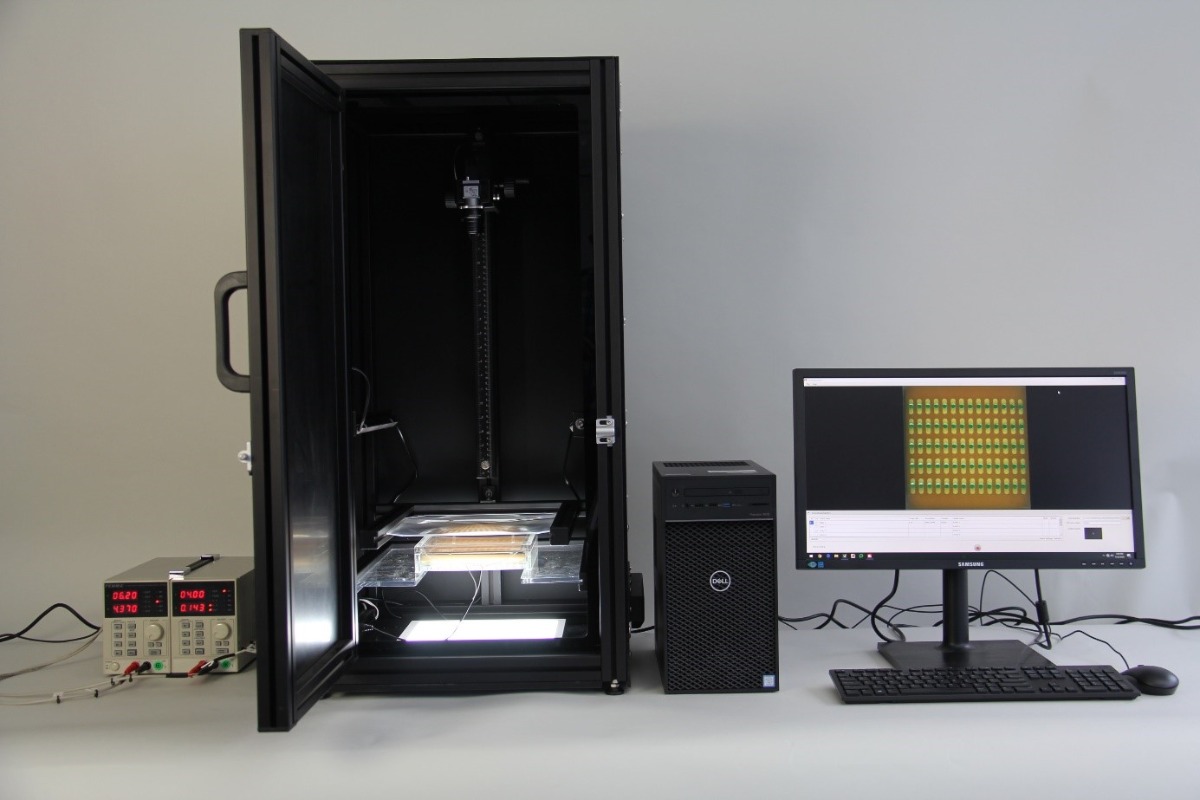
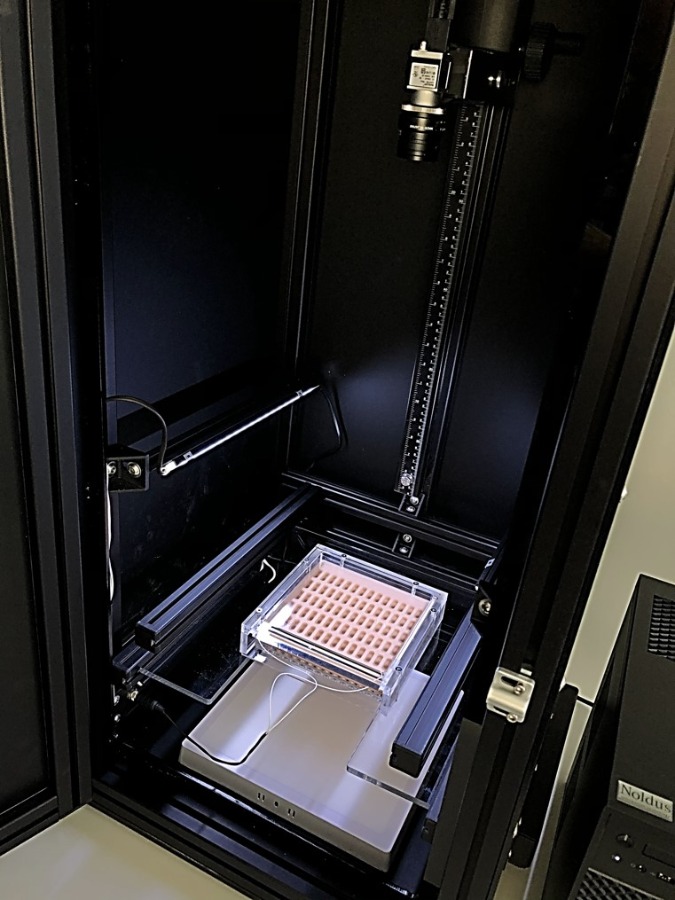
A look inside the EntoLab Observation Chamber. In this photo the Fresnel lens has been removed, so you can see the assay plates with anti-fogging cover plate.
EntoLab Observation Chamber
- Compact benchtop cabinet
- High-resolution, light-sensitive color video camera (2040x2046 pixels) with 1” 25mm lens
- Vertically adjustable camera mount
- LED arrays for overhead illumination
- Removable Fresnel lens to rectify viewing angle
- Assay plate holder
- Anti-fogging cover plate, with adjustable power supply
- Lateral ventilation unit, with adjustable power supply
- LED backlight panel
Depending on the substrate (leaf, fruit, agar, etc.) and insect species, you either use the backlight panel for illumination from below or the toplight units for overhead illumination.
Assay plates
EntoLab comes with a range of assay plates that allow you to create tracking solutions for a wide variety of insects, plants and other substrates, with up to 300 arenas on a single assay plate. A unique feature of EntoLab’s hardware design is that the insects are released simultaneously from a cage plate immediately below the arena plate. This synchronizes the starting point of all trials and improves the analysis. Insects must climb upward to find the arena. The modular sandwich system of the assay plates assembly allows you to simply create a no-choice or two-choice assay by selecting the right top arena template. A range of plates are available to best accommodate either whole leaves or leaf strips pressed between foam, or other samples (fruits, agar) inside plexiglass.
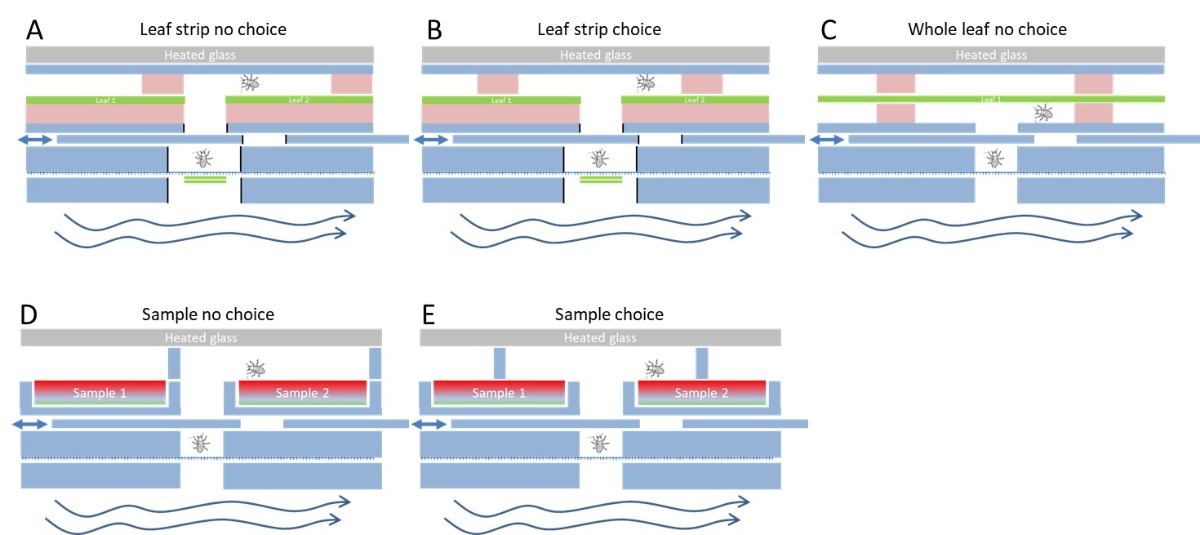
Diagrams of sandwich assemblies of a lower release plate and an upper assay plate showing a single arena. A-B and D-E show how a simple shift in the arena template creates a no-choice or 2-choice type assay. The leaf strip and whole leaf assays are designed for backlight. Green filters and well coating are applied in A-B to create even lighting relative to the leaves. In the whole leaf assay C insects are viewed as shadows through the leaf.
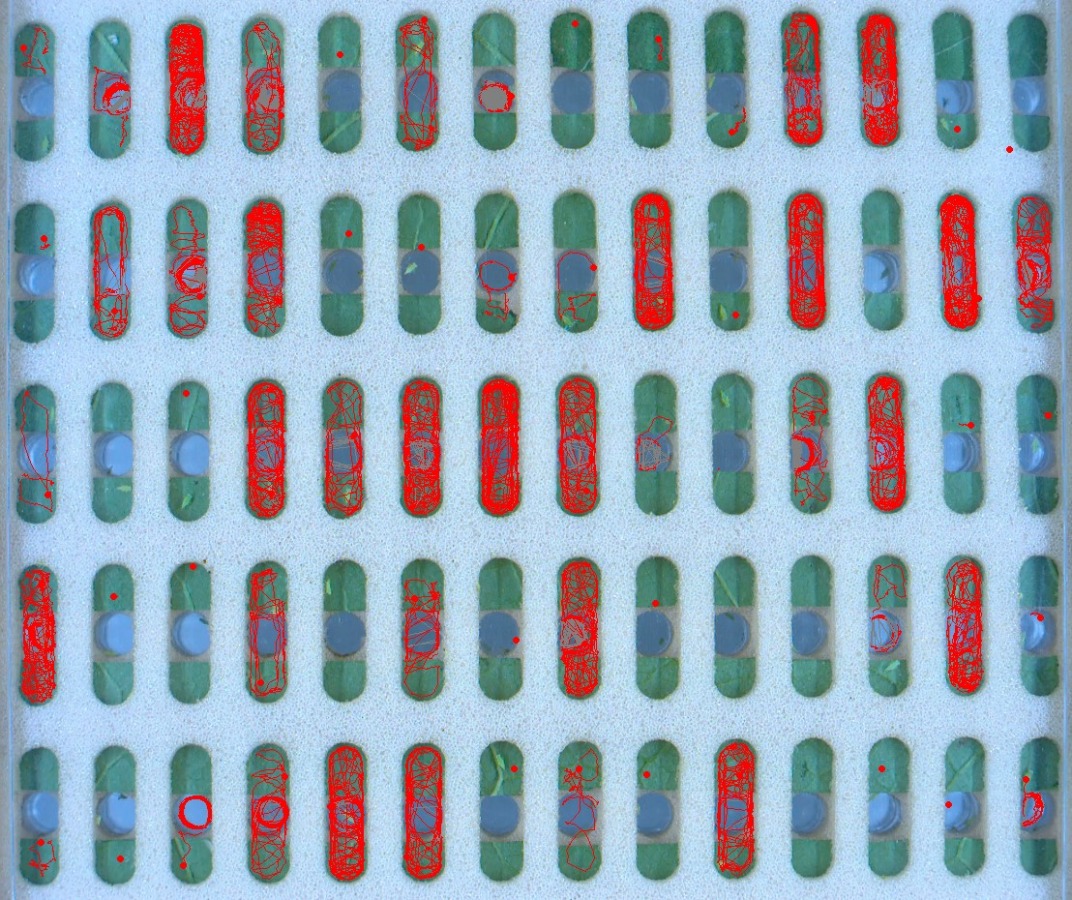
Assay plate showing 20 min tracks in 70 two-choice arenas (miniature T-mazes). Each arena has a circular release zone (the insect walks up from below) and two choice zones of different genotypes on either side. Some insects have not yet moved in the selected tracking period (red dot) and others have been walking actively (red track).
Foam assay plates
The foam assay plates consist of a test sample support plate and a top arena plate, both made of foam fixed to a plexiglass support. The sample support plate provides a foam cushion for test samples (e.g. leaf fragments). It contains 126 holes through which the insects emerge into the arena once they are released. Next to the holes test samples cut to size are placed. The release holes with arranged samples are turned into individual arenas by placing the arena template on top. Insects released from the access hole will find a leaf to one side only (no choice) or to two sides (choice) depending the shape of the arena plate.
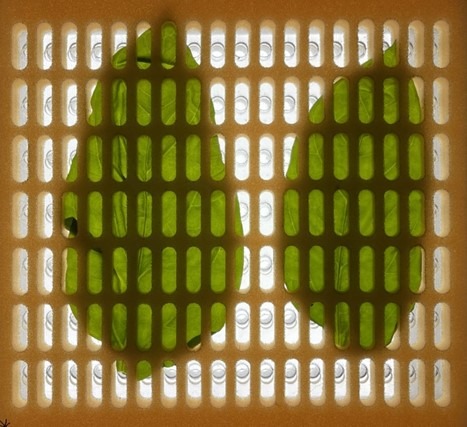
For whole leaves a special design is provided in which the insects remain on the lower side of the leaf and can be tracked through the leaf as a shadow.
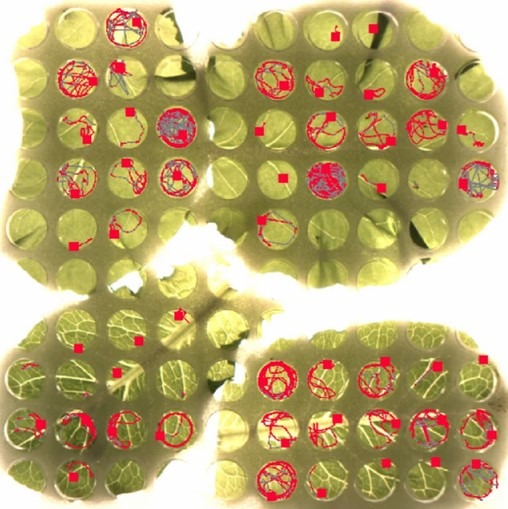
If top inoculation is preferred or needed this can be designed with up to 300 arenas but without the simultaneous insect release option.
Plexiglass assay plates
If samples to be tested are thick (e.g. fruits, stems) or dissolved in or placed on agar, the plexiglass assay plates provide flexible solutions. They consist of a test sample support plate that is closed or open at the bottom and a top arena plate, both made of plexiglass. The support plate provides chambers for samples and also has 126 holes through which the insects emerge into the arena once they are released. Next to the holes, test samples are placed. The release holes with arranged samples are turned into individual arenas by placing the arena template on top. Insects released from the access hole will find a single sample to one side only (no choice) or two different samples on either side (2-choice) depending on the shape of the arena template.
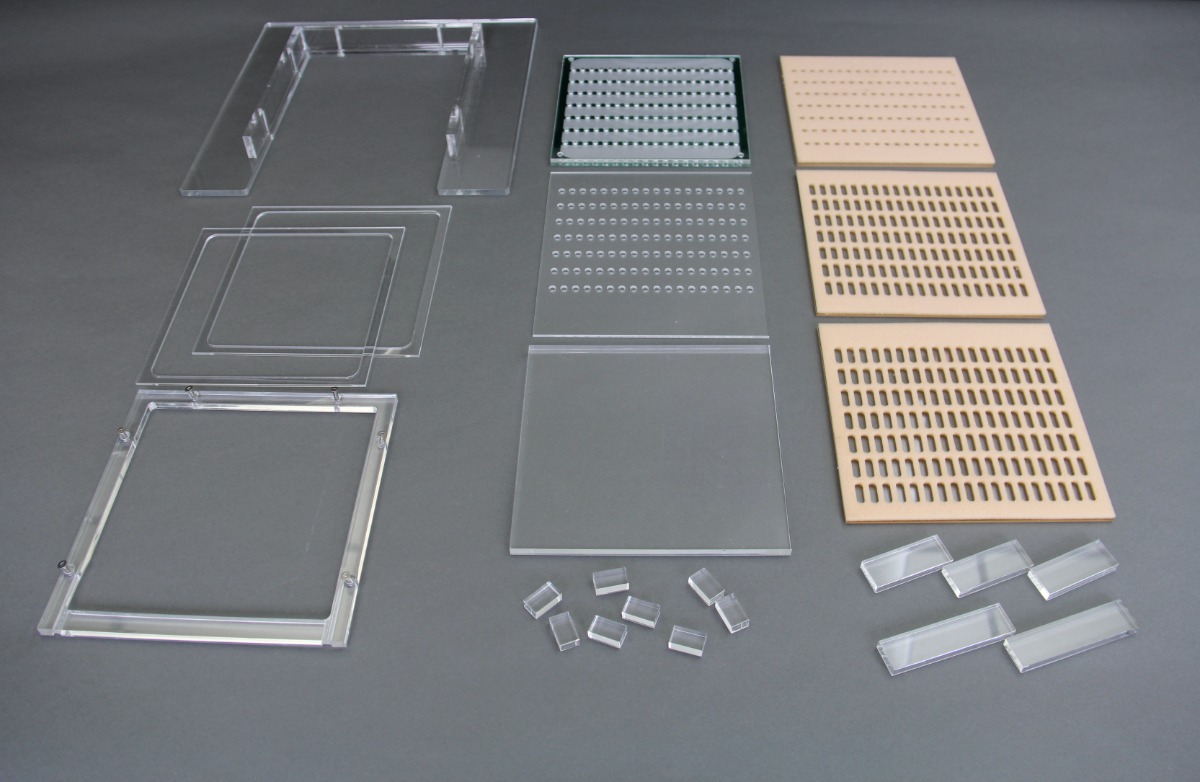
 English
English German
German French
French Italian
Italian Spanish
Spanish Chinese
Chinese